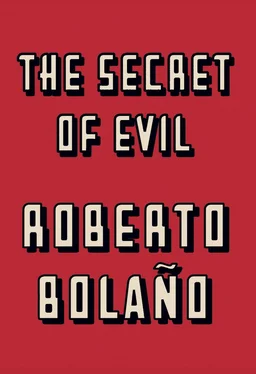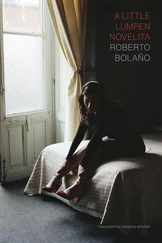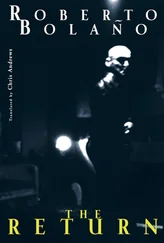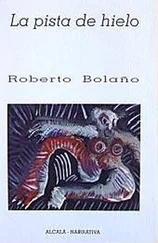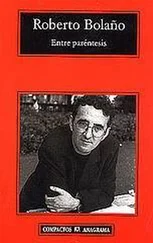Next to him is J.-J. Goux. About J.-J. Goux I know nothing. He’s probably called Jean-Jacques, but in this story, for the sake of convenience, I’ll continue to use his initials. J.-J. Goux is young and blond. He’s wearing glasses. There’s nothing especially attractive about his features (although, compared to Henric, he looks not only more handsome but also more intelligent). The line of his jaw is symmetrical and his lips are full, the lower lip slightly thicker than the upper. He’s wearing a turtleneck sweater and a dark leather jacket.
Beside J.-J. is Ph. Sollers, Philippe Sollers, born in 1936, the editor of Tel Quel , author of Drame, Nombres , and Paradis , a public figure familiar to everyone. Sollers has his arms crossed, the left arm resting on the surface of the table, the right arm resting on the left (and his right hand indolently cupping the elbow of his left arm). His face is round. It would be a gross exaggeration to say that it’s the face of a fat man, but it probably will be in a few years’ time: it’s the face of a man who enjoys a good meal. An ironic, intelligent smile is hovering about his lips. His eyes, which are much livelier than those of Henric or J.-J., and smaller too, remain fixed on the camera, and the bags underneath them help to give his round face a look that is at once preoccupied, perky and playful. Like J.-J., he’s wearing a turtleneck sweater, though the sweater that Sollers is wearing is white, dazzlingly white, while J.-J.’s is probably yellow or light green. Over the sweater Sollers is wearing a garment that appears at first glance to be a dark-colored leather jacket, though it could be made of a lighter material, possibly suede. He’s the only one who’s smoking.
Beside Sollers is J. Kristeva, Julia Kristeva, the Bulgarian semiologist, his wife. She is the author of La traversée des signes, Pouvoirs de l’horreur , and Le langage, cet inconnu . She’s slim, with prominent cheekbones, black hair parted in the middle and gathered into a bun at the back. Her eyes are dark and lively, as lively as those of Sollers, although there are differences: as well as being larger, they transmit a certain hospitable warmth (that is, a certain serenity) which is absent from her husband’s eyes. She’s wearing just a turtleneck sweater, which is very close-fitting but the neck is loose, and a long V-shaped necklace that accentuates the form of her torso. At first glance she could almost be Vietnamese. Except that her breasts, it seems, are larger than those of the average Vietnamese woman. Hers is the only smile that allows us a glimpse of teeth.
Beside la Kristeva is M.-Th. Réveillé. About her too I know nothing. She’s probably called Marie-Thérèse. Let’s suppose that she is. Marie-Thérèse, then, is the first person so far not to be wearing a turtleneck sweater. Henric isn’t either, actually, but his neck is short (he barely has a neck at all) while Marie-Thérèse Réveillé, by contrast, has a neck that is long and entirely revealed by the dark garment she is wearing. Her hair is straight and long, with a center part, light brown in color, or perhaps honey blonde. Thanks to the slight leftward turn of her face, a pearl can be seen suspended from her ear, like a stray satellite.
Next to Marie-Thérèse Réveillé is P. Guyotat, that is, Pierre Guyotat, born in 1940, the author of Tombeau pour cinq cent mille soldats, Eden, Eden, Eden , and Prostitution . Guyotat is bald. That’s his most striking characteristic. He’s also the most handsome man in the group. His bald head is radiant, his skull capacious and the black hair on his temples resembles nothing so much as the bay leaves that used to wreathe the heads of victorious Roman generals. Neither shrinking away nor striking a pose, he has the expression of a man who travels by night. He’s wearing a leather jacket, a shirt and a T-shirt. The T-shirt (but here there must be some mistake) is white with black horizontal stripes and a thicker black stripe around the neck, like something a child might wear, or a Soviet parachutist. His eyebrows are narrow and definite. They mark the border between his immense forehead and a face that is wavering between concentration and indifference. The eyes are inquisitive, but perhaps they give a false impression. His lips are pressed together in a way that may not be deliberate.
Next to Guyotat is C. Devade. Caroline? Carole? Carla? Colette? Claudine? We’ll never know. Let’s say, for the sake of convenience, that she’s called Carla Devade. She could well be the youngest member of the group. Her hair is short, without a fringe, and, although the photo is in black and white, it’s reasonable to suppose that her skin has an olive tone, suggesting a Mediterranean background. Maybe Carla Devade is from the south of France, or Catalonia, or Italy. Only Julia Kristeva is as dark, but Kristeva’s skin — although perhaps it’s a trick of the light — has a metallic, bronze-like quality, while Carla Devade’s is silky and yielding. She is wearing a dark sweater with a round neck, and a blouse. Her lips and her eyes betray more than a hint of a smile: a sign of recognition, perhaps.
Next to Carla Devade is M. Devade. This is presumably the writer Marc Devade, who was still a member of Tel Quel ’s editorial committee in 1972. His relationship with Carla Devade is obvious: man and wife. Could they be brother and sister? Possibly, but the physical dissimilarities are numerous. Marc Devade (I find it hard to call him Marc, I would have preferred to translate that M into Marcel or Max) is blond, chubby-cheeked and has very light eyes. So it makes more sense to presume that they are man and wife. Just to be different, Devade is wearing a turtleneck sweater, like J.-J. Goux, Sollers and Kristeva, and a dark jacket. His eyes are large and beautiful, and his mouth is decisive. His hair, as I said, is blond; it’s long (longer than that of the other men) and elegantly combed back. His forehead is broad and perhaps slightly bulging. And he has, although this may be an illusion produced by the graininess of the image, a dimple in his chin.
How many of them are looking directly at the photographer? Only half of the group: Henric, J.-J. Goux, Sollers and Marc Devade. Marie-Thérèse Réveillé and Carla Devade are looking away to the left, past Henric. Guyotat’s gaze is angled slightly to the right, fixed on a point a yard or two from where the photographer is standing. And Kristeva, whose gaze is the strangest of all, appears to be looking straight at the camera, but in fact she’s looking at the photographer’s stomach, or to be more precise, into the empty space beside his hip.
The photo was taken in winter or autumn, or maybe at the beginning of spring, but certainly not in summer. Who are the most warmly dressed? J.-J. Goux, Sollers and Marc Devade, without question: they’re wearing jackets over their turtleneck sweaters, and thick jackets too from the look of them, especially J.-J. and Devade’s. Kristeva is a case apart: her turtleneck sweater is light, more elegant than practical, and she’s not wearing anything over it. Then we have Guyotat. He might be as warmly dressed as the four I’ve already mentioned. He doesn’t seem to be, but it’s true that he’s the only one wearing three layers: the black leather jacket, the shirt and the striped T-shirt. You could imagine him wearing those clothes even if the photo had been taken in summer. It’s quite possible. All we can say for sure is that Guyotat is dressed as if he were on his way to somewhere else. As for Carla Devade, she’s in between. Her blouse, whose collar is showing over the top of her sweater, looks soft and warm; the sweater itself is casual, but of good quality, neither very heavy nor very light. Finally we have Jacques Henric and Marie Thérèse Réveillé. Henric is clearly not a man who feels the cold, although his Canadian lumberjack’s shirt looks warm enough. And the least warmly dressed of all is Marie-Thérèse Réveillé. Under her light, knitted, open-necked sweater there are only her breasts, cupped by a black or white bra.
Читать дальше
